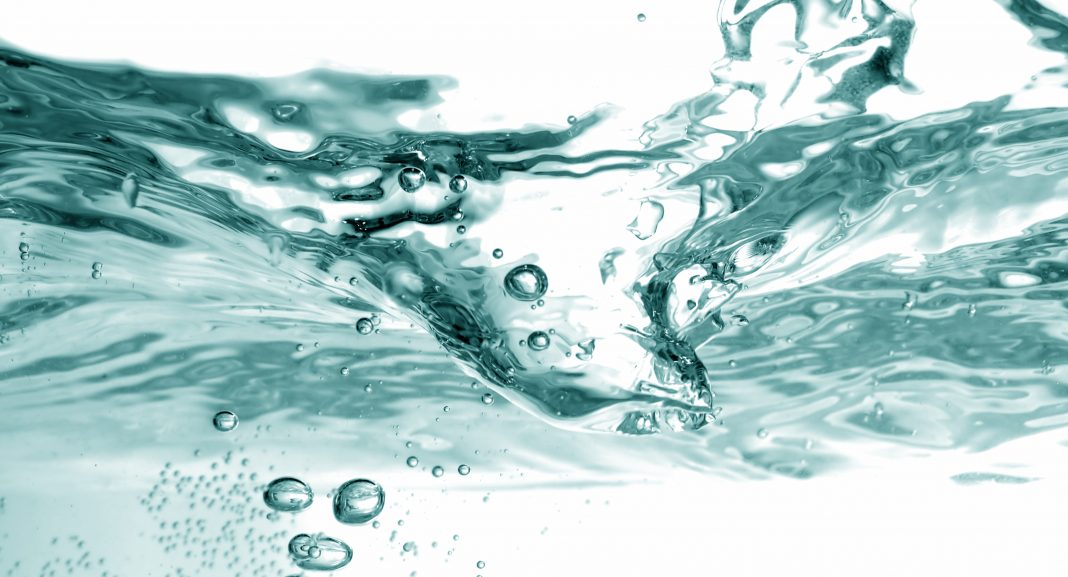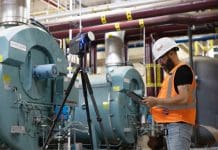Halcyan Water Conditioners explains to PBC Today the benefits of installing chemical and salt-free water conditioners in combatting limescale during the construction or refit of commercial buildings and dwellings
60% of the UK is supplied with hard water, with around £3bn spent combatting the effects of limescale every year. However, despite the positive environmental impact that treating limescale can have on carbon savings as well as appliance longevity, it is an issue that is largely misunderstood. With carbon savings featuring at the heart of the sustainability agenda in construction, it’s time the industry took note of the significant environmental benefits of hard water conditioners into consideration at the planning stage.
Limescale is destructive within systems and in a hard water area can build up in layers in a matter of months unless actively addressed, even in a new build property. This build-up can result in significant reductions in energy efficiency in any hot water system, increased operational energy consumption going forward, as well as causing damage to appliances and therefore embodied carbon losses.
The critical issue is that limescale acts as an excellent insulating material, significantly slowing the transfer of heat from the heating element to the water, reducing their energy efficiency dramatically and contributing to embodied carbon losses.
To put it in perspective, just 3mm of limescale raises energy consumption by 25%, significantly reduces the lifespan of appliances, and drastically increases energy bills. In a hard water area, system maintenance requirements are dramatically increased and items such as boilers, calorifiers hot water cylinders, immersion heaters, thermostatic valves and other water-bearing devices fail earlier and more frequently if water is left untreated.
Given that the very nature of calcite (CaCO3) is to build up on itself, 6mm is easily reached in areas like Norwich, London, and Poole, wasting around 50% of the operational energy consumed.
Limescale treatment facts:
- In the average UK domestic home, the annual Co2e consumption is around 4.5 tonnes per annum. In a hard water area, treating the water can reduce this by around 0.5 tonne, every year.
- An average commercial office with 3 floors and 105 staff consumes around 1.45 million kWh pa, without treatment. Treating hard water can reduce consumption by 0.6m kWh, saving around 16 tonnes Co2e and associated energy which could be as much as £2,000 per year.
Limescale deposits throughout cold water systems but the issue is exacerbated considerably in hot water systems where the calcification process is accelerated by higher temperatures, particularly above 35⁰C.
The build-up of limescale has 3 main consequences for hot-water systems:
- Blocking and inhibiting the function of components such as valves, spray nozzles and filters, impacting on maintenance and safety.
- Reducing the flow rate through pipes results in the need for increased pumping, aggressive chemical cleaning or expensive pipework replacement.
- Sediment build-up in the bottom of hot water cylinders leading to poor performance, equipment failure, extra cost of replacement parts and maintenance, and an increased risk of Legionnaire’s disease
Water conditioner regulations
Certain preventative action must be taken in order to comply with domestic and commercial legislation, so the issues presented by limescale affect a building’s statutory compliance as well as a developer’s environmental goals.
For new domestic properties, Building Regulations 2010 parts L1 and L2 require “the inclusion of a scale reducing device on the cold water inlet to any type of water heater where the water hardness is above 200ppm”.
For existing properties, the Minimum Energy Efficiency Standards (MEES) were introduced in 2015 help to deliver carbon reduction targets for 2050 for private rented residential and non-domestic properties.
MEES states that from April 2018, tenancies may not be granted or renewed unless a building is rated E or above for EPC. At the time of introduction, it was estimated that 18% of commercial properties were rated F or G and so significant retrofit action is required in order for these standards to be met.
From a health and safety perspective, the HSE raise the specific issue of Legionnaire’s disease, stating in HSG274 part 2 that “in hard water areas, softening of the cold water supply to the hot water distribution system should be considered to reduce the risk of scale being deposited at the base of the calorifier and heating coils, and to reduce the potential for scale build-up within the system pipework and components,” demonstrating the public health implications of limescale.
While the environmental and health benefits of treating hard water are well documented, and legislation provides a regulatory basis for implementing a solution, developers should carefully consider which method for hard water treatment they specify in any project.
And, with clear sustainability objectives, the construction industry should consider the environmental impact of some types of treatment.
What water conditioners are available?
There are many solutions available on the market in the UK, with some designed to treat individual pieces of equipment, and others to treat entire systems. However, while many such devices can reduce limescale accumulation, it’s vital to investigate their environmental credentials in order to specify a truly sustainable solution.
The most common commercial water conditioning systems are electro-magnetic and salt-based (ion-exchange) softeners. For residential properties, there are additional products such as magnetic, electrical and chemical dosing water conditioners.
Offering varying levels of effectiveness and longevity, most require some form of ongoing maintenance, even if it’s just cyclical replacement when the sacrificial anode runs out. Worth remembering is that water treated by many of these devices reverts back to it’s original ‘bonding’ state after just 48 hours.
This leads to wastage, where if the water sits idle in the system for too long, for example over the weekend in a commercial office building, by Monday morning it must be treated once again requiring more complex water recycling at the design stage, but this further adds to the cost of installation and ongoing maintenance.
Salt water conditioners dispel unwanted brine effluent into the watercourse, somewhat negating the environmental benefits gained from the reduction in limescale.
In addition, they consume large amounts of water as they recharge and require frequent topping up and water testing to ensure their ongoing efficiency.
Additionally, water treated with salt is not suitable for plants and watercourses, nor should it be supplied to drinking water outlets, again complicating the overall plumbing system design.
It’s fair to say that many maintenance teams in commercial buildings are already stretched, and it’s often the regular salt ordering, topping up and general maintenance that gets pushed down the agenda, rendering the units expensively ineffective and exposing systems to damage and inefficiencies.
Magnetic, electro-magnetic and powered water conditioners are clamped to the outside of a pipe and generate a magnetic field through which the water travels to be treated. While magnetic and powered conditioners do not produce brine effluent, they do require power to operate and so add to a building’s energy consumption, and can easily be taken ‘off line’ by human error.
However, there is an alternative, sustainable solution to the problem: an unpowered device which passes water through a solid state, alloy core, creating a strong galvanic reaction which temporarily but fundamentally alters the structure of the minerals.
This power, chemical and salt-free solution produces a longer lasting effect, changing the behaviour of the minerals within the water for around 21 days, entirely removing the need for any recirculation system or concerns about reversion within the system.
There are multiple commercial and environmental advantages to this type of solution which comfortably complies with all relevant legislation and provides additional benefits to public health without producing unwanted side effects or by-products.
The alloy core solution has no moving parts and is proven to have a lifespan of 30+ years. Once installed it requires no maintenance whatsoever for its duration and, because it doesn’t rely on salt or chemicals, there is no ongoing requirement for expensive consumables, nor does it expel effluent into the watercourse.
The resultant water is potable and users comment on its more pleasant nature. These devices do not require any power or earthing in order to operate and protect the entire hot and cold water supply, including all downstream appliances.
Installation is simple and in line, and can be performed in any orientation, so no extra space is needed even when retrofitting a device.
While salt and chemical water conditioners are readily available and have been used widely in the past, it’s important that the negative environmental and commercial side effects are taken into consideration when specifying a solution; fortunately, these issues are addressed by more modern technology.
If a project is to be truly sustainable, then it is vital that maintenance requirements, effluent by-products and overall environmental credentials are carefully considered at the planning phase.
With zero ongoing requirements, the alloy core water conditioner offers the most sustainable and reliable solution available in the UK and, with its 30+ year lifespan delivering the most cost-effective solution, it’s the obvious choice for the green thinking developer.














